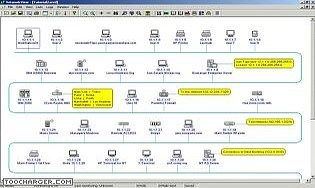

SERVER_IP_HERE 192.168.1.1 UGHS 1 299 en0ġ92.168.1.1 0:25:9c:4a:c6:44 UHLWIir 13 28987 en0 988ġ92.168.1.126 0:88:65:5c:6a:f4 UHLWIi 0 33 en0 428ġ92.168.1. Some other VPN architectures seem to cope better as they maintain or cache the session and can resume it regardless of the region the responding or active LB is located. I also tried directly adding the local ip the VPN gives to me, but again it did not work: allow 10.80.80.100 ĭoes this need to fixed from the pptp server somehow or can it be fixed from an nginx rule?Įdit: The routing tables on the client (OS X) before and afterconnecting to the vpn:ĭestination Gateway Flags Refs Use Netif Expireġ92.168.1.1 0:25:9c:4a:c6:44 UHLWIir 19 289ġ92.168.1.126 0:88:65:5c:6a:f4 UHLWIi 0 33 en0 440ġ92.168.1.255 ff:ff:ff:ff:ff:ff UHLWbI 0 24 en0 The VPN assigns local IP's of the form allow 10.80.80.*, so I put another allow of the form allow 10.80.80.0/24 I understand that the VPN still knows my original IP instead of the ip it gave to me, but there should be a workaround for this situation. Here are six changes you need to make: Create a blacklist of known public VPN websites and keep. use smaller ip blocks for instance if you have 10 VPN users, use a pool of 14 ip addresses a /28.

Home users typically use the .x blocks and businesses use 10.x.x.x so you can use the 172.16.0.0/12 with very few problems. The error logs show a connection attempt from my original ip, not the VPN's IP. Next, you need to configure your firewalls or routers (or both) to prevent outgoing VPN access. use less common subnets like 192.168.254.0/24 instead of 192.168.1.0/24. Click on it and as an admin, choose properties. Look if there is a new network adapter that has no internet connection. So I dont think the router can block all the VPN, you can try to use the in the key word.
#VPN PREVENT SAME NETWORKVIEW WINDOWS#
However, when I try to connect a site on A (the vpn server has an nginx server too), my remote IP appears as my original IP, not the IP I get when I connect through VPN and I get a 403 Forbidden page on nginx. For Windows 8: Look if after connecting to the VPN your IP is still displayed as your home country (Google: What is my IP). Re:How to prevent bypassing parental control via VPN It seems that your son has installed a VPN app, which the data via VPN tunnel, the VPN has many tunnels, even you block one, it can go by another one. I have set up allow rules for my nginx site as follows and they work OK: allow ip_of_a The PPTP VPN server is installed in A, and the nginx is on B.
#VPN PREVENT SAME NETWORKVIEW INSTALL#
My main aim is the following: Install a VPN server on a server, and a website on that server should be accessible only to users that are using the VPN on that same server.


 0 kommentar(er)
0 kommentar(er)
